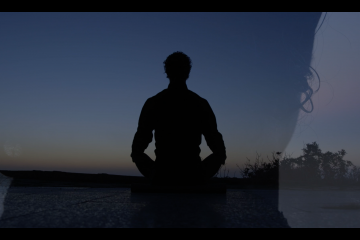We are all different from each other, everyone has different needs and experiences things in a different way and we love to hear how our users experience telerehabilitation with Optimov. We believe that inspiration comes from those differences and this is why we love to share their stories – the stories of our Optimovers. We hope to inspire more people to pluck up courage to try innovative solutions, such as Optimov, to improve their life.
In today’s post we are going to share Flemming’s experience with Optimov – a 60-years-old man, diagnosed with COPD (Chronic Obstructive Pulmonary Disease) approximately 2 years ago. If you are unaware of COPD, keep reading this paragraph, or jump to the next one for Flemming’s story. COPD is a chronic lung disease causing a progressive and irreversible decline in lung function. The disease is characterized by increasing breathlessness, cough, mucus (sputum) production and wheezing. However, there are many things one can do to manage your COPD and breathe better. One of them is to improve physical condition through training.
We believe that telerehabilitation with Optimov can empower and motivate people with COPD to train and improve their condition. As mentioned in some of our previous publications, we are currently in the process of clinically testing telerehabilitation with our app Optimov, for people with COPD, among other diseases. Flemming is this month’s Optimover, showing great improvements and motivation to keep on training with Optimov.
At the time of the interview Flemming had been training with Optimov for 6 weeks (26.06.2018). Today he keeps on training with our platform and has improved his condition and shape, however before he was introduced to Optimov, he was not training at all.
Flemming’s Telerehabilitation with Optimov
We interviewed Flemming to hear more about his experience with the app and telerehabilitation, and to spread the positive outcome of training with Optimov. So if you want to read more about how it works and why it is the most convenient way of tele-rehabilitation, keep on reading.
What made Flemming participate in the trials was his desire and willingness to contribute to researches concerning his disease: ‘I always subscribe to trials or studies that can help in the research of my disease, if it is material that is available to all without delays by pharmaceutical companies etc’. So, it has been a positive experience for him. He says that ‘the application itself is manageable and easy to use when training begins. I have not touched the settings yet. I have not figured out what other changes I can customize myself in the program. Actually, I think it’s nice not always to make all the decisions, on the other hand, it may give a sense of insufficiency if the exercise set is too hard. It would scare me if advanced computer skills are needed from the beginning. It will take some time before I try to explore the app’s full potential’.
Lucky for Flemming and all our user, advanced computer skills are definitely not needed to train with Optimov. The program is designed to be simple and easy to handle by anyone from the start. All you need to do is follow the steps, starting by logging in, connecting the sensor and answering to a few questions and then starting to train (see screenshots below).

Screenshot 1. Answering questions before starting the exercise set.
In order to keep it simple and convenient for our users, we develop the app based on their feedback. According to Flemming, the faster he can start his exercise session the better, ‘if many potential choices then less people like me will use this app’. Another suggestion we got from him is to inform in advance what kind of props will be used throughout the module and in the app as a whole. Right now it is shown in the preview of the upcoming exercise in the corner of the screen (see screenshot below).

Screenshot 2. Exercise preview in the top left corner.
There are different props needed to perform the exercises, a lot of them are to be found at home, ‘the idea of chair and armchair is good, everyone has them. The more exercises without purchasing special props the better. I don’t want to invest in a training ball and I also don’t think I could accommodate one at home’. We do, however, have exercises with a training ball or elastic for example. We believe there are good exercise opportunities with those, but there is also an option to opt them out and keep the training with easy to find props. The most important thing at the end is to feel an improvement no matter what you choose to train with. We are happy to hear that Flemming can feel an improvement: ‘The biggest improvement I can feel is the agility and rotation in the hip and neck being more effortless. I noticed that already after training 5-6 times’. Besides that he also improved his condition and ‘got rid of some of the guilt I had before my enrollment to the trials, because I hadn’t done anything.
Conclusion
Four months ago Flemming was not working out at all. Today, with the help of Optimov, he is training almost every day. He improved his physical condition and can feel the benefits exercising has on his body. You don’t need to be a computer engineer to use Optimov. Flemming is not a heavy user of his smart phone, using it mostly for phone calls and occasional bus ticket purchase, and yet, he finds the Optimov app intuitive and easy to use. Most importantly it provides him with the drive and means to do the exercises: ‘it feels like there is someone that helps with motivating me, it keeps me going’. This is also why he would definitely recommend the program and telerehabilitation to others.
Together with Flemming, we hope that his story will encourage you to try something new and hopefully embarque upon a life-improving journey. If we inspired you today, remember, we are here to help and we would love to hear your story too.



0 Comments